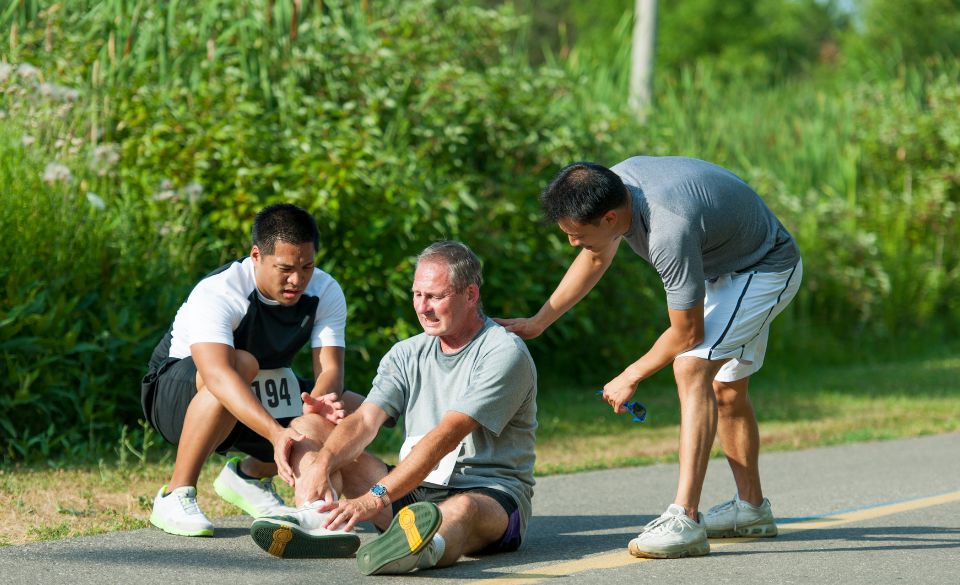
How to Prevent Running Injury
Running injures can take a toll on your body if not prevented beforehand. Many runners find themselves dealing with minor to major injuries due to incorrect mechanics or inadequate preparation. Learning how to prevent running injuries could be the difference between an enjoyable running routine and one filled with pain and disappointment.
Warm Up and Cool Down
One of the best things you can do to prevent running inj
ures is to always warm up and cool down. A good warm-up routine should include a few minutes of light jogging or walking followed by dynamic stretching and dynamic movements like butt kicks and high knees. After the warm-up, it’s important to incorporate the correct running mechanics such as good form, proper foot strike and cadence.
During the cool down, start with a few minutes of light jogging and then progress to static stretching. This should focus mainly on the muscles that were used during the run. After the static stretching, incorporate a few mobility and activation drills such as clamshells or leg swings to aid in muscle recovery.
Limit Increase in Mileage
When increasing your mileage, it is important to take a gradual approach. You should never increase your mileage more than 10% from week to week. If you increase your mileage too quickly, you run the risk of overloading your body and this can lead to potential running injuries.
Be Aware of Surroundings
Another factor to consider when running is being aware of your surroundings. Make sure you are running in safe areas and also be aware of any obstacles that could potentially hinder your running. Slip hazards, wet surfaces and sharp turns can all lead to potentially dangerous falls that could lead to injury. Be aware of these and take the necessary caution to prevent any injuries to yourself.
Listen To Your Body
When running, it is important to pay attention to your body and listen to any signs of possible injury. If at any time you feel any kind of pain or discomfort in your body, it is important to stop running and take the necessary steps to ensure that your body is healed properly. This could include decreasing mileage, rest, or foam rolling for better mobility and recovery.
Get Good Sleep
Getting a good night sleep is essential for both performance and also for injury prevention. Studies have proven that lack of sleep can increase the risk of injuries due to decreased performance, mental clarity and focus. Aim for 7-8 hours of quality sleep a night to ensure that your body is well-rested and ready to go for your next run.
By following these tips, you can vastly reduce your chance of getting injured while running. Take the time to warm up and cool down, increase your mileage gradually, pay attention to your surroundings and listen to your body. Most importantly, take the time to get some good quality sleep as this will help to maximize performance and reduce your chance of getting injured.
Strength Training Can Also Reduce Chances Of Running Injuries
Strength training helps to strengthen and tone the muscles that support the ankles, knees, and hips. Strengthening these muscles can help to reduce the risk of developing running-related injuries, as they are better able to absorb the shock that occurs when the foot impacts the ground.
In addition, strength training can help to improve a runner’s range of motion and stability. A larger range of motion can reduce the risk of strain and overuse injuries, while improved stability can help to avoid ankle sprains and other injuries occurring as a result of poor balance or coordination.
Regular strength training can also help to increase a runner’s power and endurance. An increase in power can enable a runner to maintain a faster running pace for a longer period of time, while improved endurance can help to reduce the risk of fatigue-related injuries.
When starting a strength-training routine, it is important to ensure that the exercises you perform are specific to your running discipline. For instance, if you are a sprinter, performing squats and deadlifts can help to improve power and strength in your legs and hips. On the other hand, exercises such as step-ups and lateral lunges are useful for runners who run longer distances.
It is also important to give your muscles time to recover between strength training sessions. Aim to leave at least 48 hours of rest between workout sessions to allow your muscles time to repair themselves. Additionally, it may be beneficial to perform foam rolling or stretching exercises after strength training, as this can help to reduce soreness and improve flexibility.
In conclusion, strength training can be a great way to reduce the risk of running-related injuries. It can help to strengthen the muscles around the ankles, knees, and hips, while improving range of motion and stability. In addition, it can also help to boost power and endurance, allowing runners to train more effectively.


